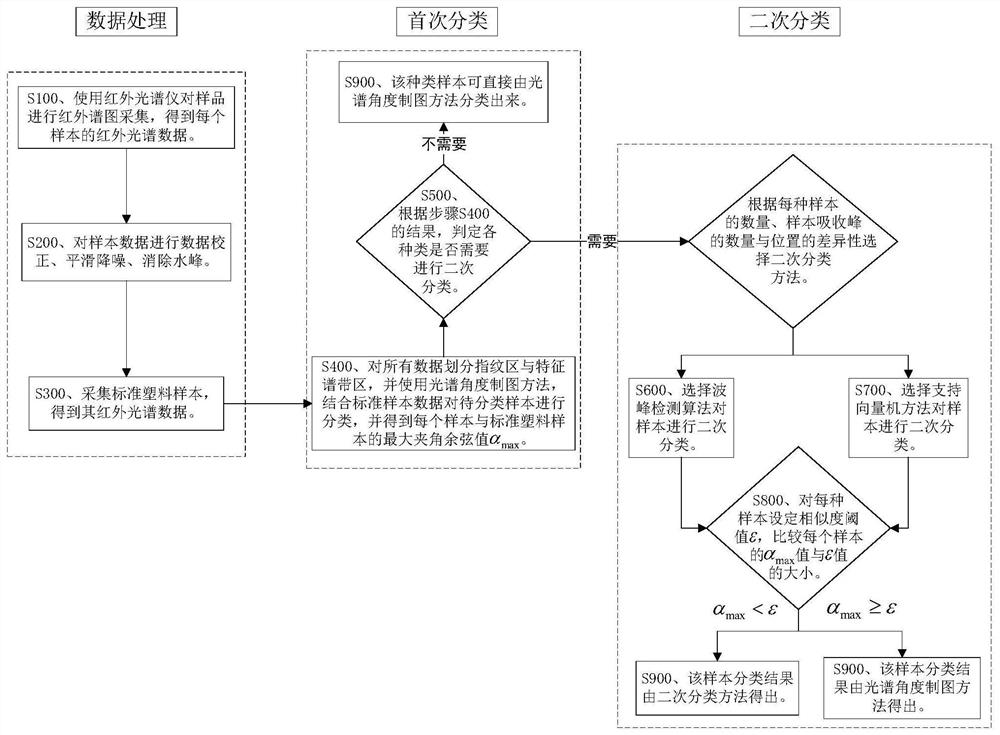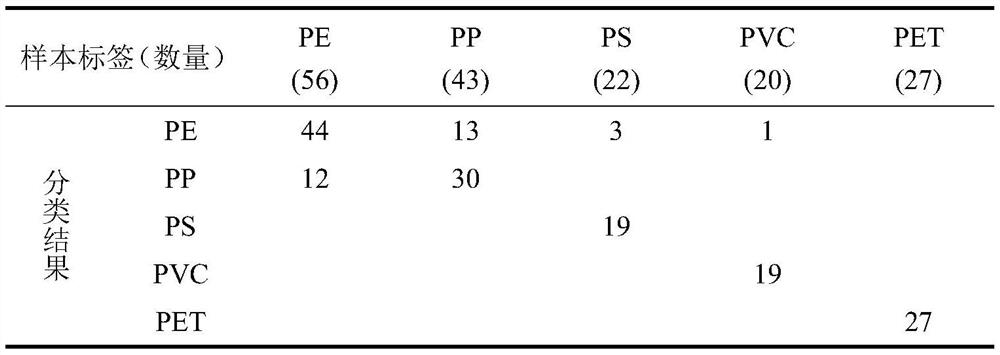Solid waste plastic material identification method based on double-layer classification algorithm
A classification algorithm and recognition method technology, applied in the direction of analysis of materials, character and pattern recognition, calculation, etc., can solve the problems of high classification environment and sample characteristics, low classification efficiency, insufficient detection accuracy, etc., to achieve no secondary pollution , accurate classification, and high detection accuracy
- Summary
- Abstract
- Description
- Claims
- Application Information
AI Technical Summary
Problems solved by technology
Method used
Image
Examples
Embodiment
[0041]The data preprocessing stage includes the following steps:
[0042] S100. Collect a number of waste plastics by using an unbiased sampling method, and collect their infrared sample data. A Fourier transform infrared spectrometer of the American Thermo Fisher brand and model NICOLETIS10 was selected to collect the infrared spectra of the samples, and the infrared spectral data of 168 samples were obtained. Among them, the five samples of polyethylene (PE), polypropylene (PP), polystyrene (PS), polyvinyl chloride (PVC), and polyethylene terephthalate (PET) are 56, 43, 22, 20, 27.
[0043] S200. Perform data correction, smoothing and noise reduction on the sample data in step S100, wherein 3600-3300cm -1 The data in the wavelength interval is the water peak, and the absorbance data in this area is set to 0, that is, the influence of the water peak on the subsequent plastic classification is eliminated.
[0044] S300. For the five standard plastic samples of PE, PP, PS, P...
PUM
 Login to View More
Login to View More Abstract
Description
Claims
Application Information
 Login to View More
Login to View More - R&D
- Intellectual Property
- Life Sciences
- Materials
- Tech Scout
- Unparalleled Data Quality
- Higher Quality Content
- 60% Fewer Hallucinations
Browse by: Latest US Patents, China's latest patents, Technical Efficacy Thesaurus, Application Domain, Technology Topic, Popular Technical Reports.
© 2025 PatSnap. All rights reserved.Legal|Privacy policy|Modern Slavery Act Transparency Statement|Sitemap|About US| Contact US: help@patsnap.com



